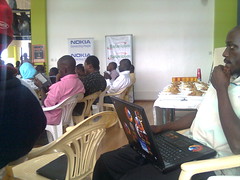1. The first car patent: January 29, 1886 Karl Benz, the founder of Mercedes-Benz, is typically thought of as the father of modern automobiles thanks to his pioneering work in engine and car design. In 1885, he created the Benz Patent Motorwagen, the first automobile created to generate its own power. It was patented early the next year, and models began selling in 1888, making Benz’s automobile the first to be sold in history.
2. Human flight: December 17, 1903 Every school child learns the story of Wilbur and Orville Wright, the Ohio-born brothers responsible for the first successful heavier-than-air manned flight at the dawn of the 20th century. They also developed the technology and controls that would make fixed-wing aircraft flight a reality. The first flight lasted only 12 seconds and spanned just 120 feet, but it was enough to begin the revolution that would affect travel, economy, and militaries forever.
3. Open-heart surgery: September 2, 1952 Although methods have surgery have since changed drastically, this operation at the University of Minnesota the first successful attempt to perform surgery on a heart by stopping it (in this instance, using hyopthermia). Later machines would be able to continue circulating blood and oxygen in the patient by bypassing the heart, but this early method was still the first instance in which surgeons realized how effective their new techniques could be.
4. Sputnik 1: October 4, 1957 Taking an early lead in the space race of the mid-20th century, the Soviet Union’s Sputnik 1 was the first man-made object to orbit the planet. In addition to technological data gathered about the ionosphere and other Earth conditions, the device heated the competition between the U.S. and the U.S.S.R. to explore space, leading eventually to the United States’ successful Apollo missions to the Moon.
5. Microchips: September 12, 1958 Jack Kilby, a Texas Instruments engineer, is often credited with inventing the modern microchip. His integrated chip, made of germanium, was a huge breakthrough in computing technology that would allow electronic circuits to be miniaturized. Robert Noyce of Fairchild Semiconductor is cited as the co-inventor for having a similar idea but using silicon instead of germanium. That single idea won him the Nobel Prize in physics in 2000, and the integrated chip is now responsible for running just about everything in your life, including the computer you’re using right now.
6. Cell phones: 1973 Before they responded to touch and voice commands, cell phones were brick-like monsters just beginning to take advantage of the power of mobile communications. There were models as early as the 1950s, though they were inhibited by enormous size and lack of power. It wasn’t until 1973 that Motorola put out the first cell phone to be commercialized for use outside of vehicles. The first cellular phone call occured in April of that year, when Motorola’s Martin Cooper, the phone’s chief inventor, placed a call to his rival at Bell Labs. After advances in the 1980s and 1990s led to explosive growth and shrinking phones, the cell phone became a necessary tool for everyone, capable of storing numbers and personal data and acting as a portable personal computer.
7. Laptops: September 1981 Although there were many different machines and tech milestones along the way in the development of portable computers, the Osborne 1 is generally considered to be the first major portable computer. Released in 1981, the Osborne Corporation’s machine had a 5-inch screen and single-sided floppy disk drives. Inspired by the Xerox NoteTaker, a portable computer that never went into production but for which some prototyps were made, the Osborne retailed for $1,795 (about $4,200 in today’s dollars) and sold relatively well until it was passed by the Kaypro II. Still, the “luggable” computer would help pave the way for smaller, sleeker, and more powerful models that would truly be laptops. The latest wave of small netbooks are a dream made possible only by the work put in 30 years ago.
8. Compact discs: October 1982 Compact discs were a true tech milestone and revolution in music distribution and consumption: Much stronger and longer-lasting than LPs or casettes, the new format raised the bar with a digital standard that has yet to be passed in terms of popularity. The first album to be released on CD was Billy Joel’s 1978 album 52nd Street, which hit shelves in Japan along with Sony’s CD player on October 1, 1982. The overwhelming success of the format led to new uses for compact discs, including data storage and personal CD creation for consumers.
9. Napster: 1999 The heady days of 1999-2001 were the peak of Napster and the dawn of digital piracy. The peer-to-peer music-sharing service changed the way consumers think about music (and paying for it) so quickly that it took regulators a while to catch up. Although Napster has since converted to a legal, pay-based service, the spirit of free media and copyright-skirting lives on and has become a key part of online culture.
10. Apple’s iPod: 2001 Appearing in October 2001, Apple’s iPod would eventually become the most popular portable media player on the market. Sales picked up speed in 2004 and exploded in 2005, making the iPod the default mp3 player and one of the most famous tech devices in the world. By radically simplifying the interface and making the experience as user-friendly as possible, iPods have become the aesthetic and technological standard for portable music.
(Photo credit: kri1987s)



Hi Alan, just simply complete, along and also Simon from the Webinar.
ReplyDeleteFeel free to visit my webpage : How To Treat Genital Warts